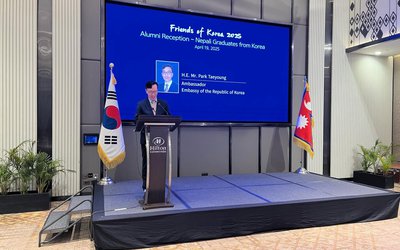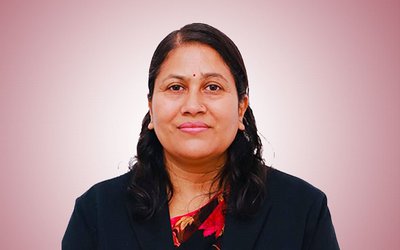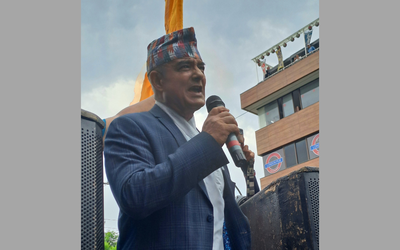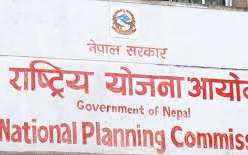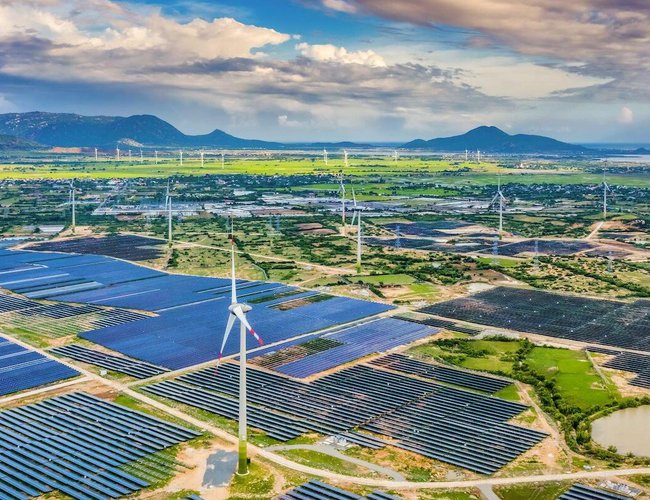
The Energy Transition in Southeast Asia
Driven by rising demand, economic growth, and climate goals,Southeast Asia’s energy transition is gaining momentum. Although fossil fuels—especially coal—still dominate, under the ASEAN Plan of Action for Energy Cooperation Phase II (2021-2025), the region aims to raise renewables to 23% of primary energy by 2025. National efforts vary but are accelerating. Vietnam leads. It had over 20 GW of solar by 2021. Thailand intends to have 30% renewable energy (RE)and robust energy efficiency (EE)by 2037. Singapore has focusedon rooftop solar and energy-smart infrastructure. Indonesia will see 23% RE by 2025 but grapples with regulatory and financing barriers. The Philippines is expanding geothermal, wind, and solar, while Malaysia is scaling solar via net metering and promotingEE. Laos and Cambodia invest in hydropower despite their social and environmental trade-offs. Brunei is exploring solar cautiously, while Timor-Leste is piloting rural solar electrification. Together, these efforts mark a regional pivot toward cleaner, more resilient energy systems.
Despite the growing momentum, Southeast Asia’s energy transition faces major roadblocks. Inconsistent policies, outdated grid infrastructure, and limited access to green finance continue to slow progress. Other challenges include heavydependence on fossil fuels, unstable regulatory environments, weak transmission systems, high project costs, gaps in technical skill, and unresolved social and environmental concerns. Overcoming these barriers is crucial for unlocking the region’s fullpotential to develop RE.
Southeast Asia’s Energy Transition: Big Goals, Tough Challenges
Limited technical capacity impedes project sustainability:A shortage of skilled human resources continues to challenge Southeast Asia’s clean energy ambitions. The deployment and maintenance of RE and EE technologies often falter due to limited technical expertise. For instance, in Indonesia, only about 2.3 GW of its vast 29 GW geothermal potential has been harnessedlargely due to the limited specialized skill in drilling and operations. In Myanmar, stalled solar projects and frequent maintenance issues highlight the need for training local technicians. Cambodia’s rural electrification still depends heavily on foreign consultants, with minimal knowledge transfer. Even in advanced markets like Singapore, a shortage of professionals in smart-grid management and retrofitting is slowing progress toward meeting its Green Plan 2030 goals.This widespread gap in skills drives up costs, fosters dependence on external contractors, and weakens the long-term sustainability and local ownership of clean energy infrastructure.
Limited access to finance and high costs slow progress: Southeast Asia’s clean energy ambitions are being held back by a persistent financing gap and high upfront costs. While the region needs USD 27–30 billion annually to stay on track for being net zero by 2050, according to IRENA, current investments hover below USD 10 billion. Commercial banks still view RE and EE projects as high-risk, thereby deterring the investment of private capital.Countries like Laos, Cambodia, and Timor-Leste remain heavily reliant on donor support sincestrong domestic green finance systemsare limited. In contrast, Thailand’s Energy Efficiency Revolving Fund (2003) showcases how blended finance and public-private models can succeed. Such innovations, however, are still rare. Meanwhile, inadequate incentives and weak enforcement of energy codes, particularly in Myanmar and the Philippines, continue to stall industrial upgrades. Without stronger financial ecosystems and policy support, Southeast Asia risks falling short of its clean energy potential.
Weak grid infrastructure limits renewable integration:Outdated and fragmented electricity infrastructure remains a major obstacle to RE deployment across Southeast Asia. In the Philippines, transmission losses are over 10% in some areas and the limited connectivity across its 7,000+ islands confine solar and wind projects to costly, isolated grids. Cambodia and Timor-Leste still rely heavily on diesel-based mini-grids in rural areas, making the shift to clean energy expensive and emissions-heavy. Regionally, the ASEAN Power Grid, which is designed to enable cross-border energy trade, has seen minimal progress, with only a few of the 18 planned interconnections in operation due to financing gaps, weak coordination, and limited harmonization of grid standards. Without stronger, smarter, and more connected grids, Southeast Asia’s clean energy transition will remain slow, costly, and uneven.
Dependence on fossil fuel undermines regional renewable goals:Dependency on fossil fuel remains a major obstacle to Southeast Asia’s clean energy transition. Despite ASEAN’s target of 23% RE in the primary energy mix by 2025, coal continues to dominate. Ember Climate (2024) reports that, in 2023, Indonesia and the Philippines became the region’s most coal-reliant countries, each generating at least 61% of their electricity using coal. Vietnam's use of coal was slightly lower, at 57% in early 2024. Indonesia, one of the world’s top CO2 emitters, recorded a 13.1% emissions increase in 2022, despite that a minor 3 million-ton reduction was achieved in 2023 due to early transition steps. Even so, coal still produced 62% of its electricity. Subsidies for fossil fuel remain a key barrier: they distort energy markets and deter clean energy investment. Indonesia, for example, spent $31.78 billion on subsidies in 2023, about 16% of its national budget. Without substantial subsidy reforms and policy alignment, Indonesia and the region risk missing both the 2025 ASEAN RE goal and Paris Agreement commitments.
Social, environmental, and political barriers to RE transition:Large-scale RE projects in Southeast Asia often face complex social, environmental, and political challenges, delaying or blocking progress.In Laos and Cambodia, hydropower projects have displaced Indigenous communities, destroyed fisheries, and caused deforestation, raising concerns about the poor regulation of infrastructure. The 2018 collapse of theXePian-XeNamnoyDam was particularly damaging. Similarly, solar and wind projects in the Philippines and Indonesia encounter resistance from local communities and Indigenous groups due to inadequate consultations and unclear compensation mechanisms.In fossil-fuel-dependent economies like Brunei and Malaysia, where oil and gas revenues contribute nearly 50% of GDP, political will for RE transition remains weak, hindering progress. Without more inclusive, environmentally robust governance, these barriers risk perpetuating energy inequities and deepening reliance on fossil fuels.
Policy and regulatory instability discourage investment:Unstable and unclear energy policies continue to stall Southeast Asia’s clean energy transition by undermining investor confidence and delaying critical projects. Taiyang News (2020) reports that Vietnam’s solar energy sector experienced remarkable growth between 2019 and 2020, driven primarily by generous feed-in tariffs (FiTs).In 2019, the country added approximately 4.5 GW of solar capacity following the introduction of a FiT of $0.0935 per kWh. ACE (2021) reveals that this momentum continued into 2020, with an additional 9.3 GW of rooftop solar installations — including a single 6-GW installation commissioned within a very short period, as developers rushed to meet the FiT deadline. Yet the abrupt end of these incentives in 2021, without clear alternatives like direct power purchase agreements, stranded many projects and caused a market slowdown. In Indonesia, complex licensing, unclear procurement, and tariffs that do not reflect true project risks have discouraged private investment and slowed progress toward its 23% RE target. Myanmar’s political crisis has frozen energy planning and caused over 900 MW of solar proposals to stall. In Laos, heavy reliance on hydropower deals with Thailand and China, often backed by Chinese Belt and Road loans, has raised debt concerns and left the energy system vulnerable. Across the region, inconsistent regulatory frameworks and shifting incentives have created uncertainty, slowing the transition and deterring the very investments needed to scale up RE.
Energy Plans and Practices across Southeast Asia
Southeast Asia is advancing a multi-level strategy to address RE challenges, including fossil fuel dependence, weak grids, and fragmented policies. Regionally, the ASEAN Plan of Action for Energy Cooperation (2016–2025) targets 23% RE by 2025, with initiatives like the ASEAN Power Grid and Renewable Energy Guidelines enhancing cross-border infrastructure and regulatory coherence. Supporting programs such as the ASEAN-German Energy Program and the ASEAN Climate Change and Energy Project build technical capacity and integrate climate considerations. The ASEAN Catalytic Green Finance Facility mobilizes private capital using de-risking tools.Nationally, countries are pursuing tailored solutions. Vietnam’s Power Development Plan VIII (2021-2030), for example, aims for 40% RE by 2030, encouraging direct power purchase agreements. Thailand’s Energy Efficiency Revolving Fund (2003) provides low-cost capital for efficiency upgrades. Indonesia’s 2014 energy policy targets 23% RE, focusing on geothermal and hydro, while Singapore’s Green Plan 2030 emphasizes solar, grid upgrades, and workforce development. Malaysia’s 2023 roadmap targets 70% RE by 2050 andintegrates just transition principles. The Philippines amended its RE Act in 2022 to allow full foreign ownership, boosting investor appeal. Timor-Leste has been focusing on rural, off-grid solutions since 2010.Together, these initiatives reflect a growing commitment across the region to scale up RE, enhance system resilience, and close persistent gaps in finance, infrastructure, and policy alignment.
Southeast Asia is scaling up RE and EE to meet rising energy demand and climate targets. The ASEAN Plan of Action for Energy Cooperation (2021–2025) sets a 23% RE share and a 32% energy intensity reduction goal by 2025. Regional tools like the ASEAN Renewable Energy Management Mechanism and Energy Database System (2018) support coordinated transitions.At the national level, countries are advancing impactful reforms. Vietnam’s feed-in tariff policy has driven a solar boom. Indonesia’s 2022 Presidential Regulation and 2017 National EE Action Plan aim to decrease reliance on coal and scale up renewables. Thailand’s 2020 EE and Alternative Energy Plan focuses on building and industrial efficiency, alongside bioenergy and solar expansion. Green financing instrumentssuch as sovereign green bonds and energy service company modelsare increasingly used to attract private investment in clean energy solutions.
Multilateral agencies play a vital role in Southeast Asia’s RE and EE transition. The ADB funds solar parks, wind farms, and grid upgrades to support regional power integration. The World Bank Groupprovides technical support, concessional financing, and risk mitigation to attract private investment. UN agencies such as UNDP, UNESCAP, and UNEPpromote low-carbon strategies, strengthen policies, and build capacity, often backed by GEF co-financing. UNESCAP is particularly instrumentalin leading policy dialogues and regional roadmaps aligned with SDG 7 and the 2030 Agenda. Its contributions include national cooling action plans for Cambodia and Indonesia, research on passive cooling, and EV adoption studies in the Philippines and Thailand.Beyond these efforts, UNESCAP drives crucial conversations on phasing out coal across the Asia-Pacific, championing low-carbon energy strategies, and fostering deep regional collaboration to build resilient, sustainable, and clean energy systems for the future.UNDP, on the other hand, is driving sustainable development in Southeast Asia by supporting RE transitions, EE, and climate resilience. Through its Regional Sustainable Energy Program, UNDP aids countries in aligning energy policies with the 2030 Agenda and SDG 7. By providing technical expertise, policy advice, and capacity-building, UNDP helps mobilize financing and promote green technologies, thereby advancing the region's transition to a low-carbon, sustainable energy future.UNDP's Regional Sustainable Energy Program is central to its Sustainable Energy Strategy (2017-2021), supporting the SDGs and the Paris Agreement. The 2022-2025 Strategic Plan aims to provide 81.5 million people with access to clean energy and to provide indirect benefits to 100 million more. The focus is on expanding energy access, advancing renewables, and improving EE in Southeast Asia. While the exact year that the program will start is unclear, UNDP has led sustainable energy efforts in the region for over a decade.
IRENA supports Southeast Asia in developing policies and attracting RE investments. Bilateral and development agencies like EU, USAID, GIZ, JICA, DFAT, KfW, AFD, and Energy Foundation China (EFC) all play a crucial role by promoting power-sector reforms, providing technical training, supporting energy access, and offering concessional financing for large-scale RE infrastructure. In addition, organizations such as the ASEAN Centre for Energy, SEforALL, Clean Energy Investment Accelerator, and Private Financing Advisory Network help foster regional coordination and mobilize private capital. However, gaps in policy coherence, institutional capacity, and finance access persist, particularly in ASEAN members, requiring continued regional cooperation and international support.
Key Takeaways
To unlock Southeast Asia’s immense potential for sustainable energy, the region must boldly scale up investments in renewables, particularly solar, wind, geothermal, and hydropower, while simultaneously dismantling long-standing structural constraints. Achieving this dual goal demands a strategic mix of strengthened technical capacity, accessible and innovative financing, and modernized infrastructure. These pillars must be underpinned by dynamic public-private partnerships that effectively de-risk investments and catalyze market innovation. In the near term (2025–2027), governments should focus on building a robust pipeline of bankable projects, supported by clear, forward-looking policy frameworks. Having such a plan will then pave the way for full-scale deployment and regional expansion from 2028 to 2035. Coordinated actionacross national governments, regional platforms, and financial institutions such as ADB, the World Bank, EFC, and visionary private investorsis critical to enhancing both energy security and systemic resilience.
One of the region’s most transformative opportunities lies in the development of the ASEAN Power Grid, a keystone for unlocking cross-border energy trade and integrating renewables at scale. This bold vision offers a compelling solution to chronic grid weaknesses and fragmented power markets. Between 2025 and 2028, immediate priorities must include harmonizing technical standards, aligning regulatory frameworks, and upgrading interconnection infrastructure. Cross-border demonstration projects launched in this window can lay the foundation for a fully integrated, transnational energy market by 2035. The ASEAN Centre for Energy, alongside national utilities and transmission system operators, will be central to operationalizing this regional grid of the future.
At the policy level, regulatory clarity and market confidence are indispensable. ASEAN countries must confront instability head-on by cultivating a transparent and investor-friendly policy environmentanchored in predictable legislation, streamlined permitting processes, and competitive RE auctions. Targeted reforms by 2026 will be instrumental in unlocking large-scale private capital and accelerating energy transitions. These reforms must be harmonized with broadsustainable development commitments, and developed through close collaboration with legislative bodies, independent regulators, and energy ministries.Reducing the region’s heavy dependence on fossil fuels will require politically bold but economically necessary fiscal reforms. The gradual phasing out of fossil fuel subsidies and the introduction of carbon pricing mechanisms between 2026 and 2030 can realign market incentives in favor of clean energy while cushioning vulnerable populations through socially sensitive implementation. These actions will need strong political leadership, informed by regional benchmarking and bolstered by engagement from finance ministries and multilateral institutions.
Tackling persistent energy access gaps and socio-political constraints calls for inclusive and decentralized energy solutions. Expanding mini-grids and solar home systems, particularly in rural, island, and remote communities, should commence by 2025 and be scaled steadily through 2030. These initiatives must be grounded in participatory approaches that engage NGOs, local enterprises, and technology providers to ensure long-term community ownership and resilience.At the same time, EE must become a regional norm, not an afterthought. From green building codes and industrial audits to smart appliances and demand-side management, energy productivity gains offer some of the lowest-cost and highest-impact of all climate solutions. Region-wide EE implementation should begin in earnest by 2025, with national governments leading the charge and drawing upon regional networks to facilitate cross-country learning, scale, and replication.
Bridging Southeast Asia’s technical capacity divide will be essential for sustaining the momentum. The period from 2025 to 2030 offers a critical window to strengthen human capital, align skills development with emerging technologies, and seed innovation ecosystems. Partnerships with universities, vocational institutions, and clean tech incubators will be key to building a resilient, future-ready energy workforce.Looking ahead, digital transformation must become an enabler of energy resilience. From smart grids and AI-powered energy management systems to scalable battery storage, digital solutions will be vital to building adaptive and efficient energy networks. Their rollout—beginning in 2026—should be prioritized in fast-growing urban centers and strategic infrastructure corridors and integrated into smart city initiatives and digital innovation hubs.
Southeast Asia’s energy transition must be just, inclusive, and equitable. Capacity-building efforts must be continuous and gender-responsive, thereby ensuring that no one is left behind. Legal and policy frameworks must be refined through targeted gap assessments and stakeholder engagement. Public-private partnerships should champion clean cooking solutions, electrified transport, and climate-smart cooling. Monitoring and learning systemsanchored in robust data platforms and regionally coordinated knowledge-sharing forumsmust be reinforced to promote accountability and accelerate progress.
Dr. Gautam is an “Independent Evaluator and Consultant” with expertise in energy, natural resource management, climate resilience, and disaster risk reduction across the Asia-Pacific and Caribbean regions. The insights shared in this article are based on his extensive meta-evaluations of energy projects in the Southeast Asia. For collaborations or inquiries, he can be reached at drrgautam@gmail.com
- Climate Vulnerability And Resilience In West Asia: A Call To Strengthen Climate Governance And Accelerate Green Energy Investments
- Apr 21, 2025
- The Caribbean's Climate Crisis: A Call for Urgent Action
- Mar 14, 2025
- Renewable Energy-Sector Policy Initiatives And UNDP’s Role In The Pacific Region: The Path Ahead
- Mar 04, 2024
- Operationalization Of Nepal’s National Adaptation Plan: Institutionalizing A Monitoring, Review, And Reporting System Is Crucial
- Jan 09, 2024
- Building A Pacific Region Resilient To Climate Change: A Seven Step Approach Is Urgently Required
- Jan 04, 2024


